Tasmania, an island state located south of mainland Australia, is a unique and diverse region that boasts a rich natural environment. With its rugged coastline, dense forests, and towering mountains, Tasmania is a haven for a wide variety of flora and fauna.
The region’s temperate climate, characterized by mild summers and cool winters, provides the perfect conditions for a range of plant and animal species to thrive. From the iconic Tasmanian devil to the elusive platypus, Tasmania is home to a wealth of fascinating wildlife.
With its stunning landscapes and abundant biodiversity, Tasmania is a must-visit destination for nature lovers and adventure seekers alike. .
Types Of Ants In Tasmania, Australia
The Types Of Ants In Tasmania, Australia are listed here: Amblyopone, Anonychomyrma, Funnel Ants, Arnoldius, Austromorium, Brachyponera, Calomyrmex, Carpenter And Sugar Ants, Army Ants, Colobostruma, Acrobat Ants, Cryptic Ants, Discothyrea, Doleromyrma, Dolly Ants, Echinopla, Epopostruma, Eurhopalothrix, Gnamptogenys, Heteroponera, Crypt Ants, Iridomyrmex, Iroponera, Leptanilla, Linepithema, Lordomyrma, Mayriella, Melophorus, Shield Ants, Metapone, Trailing Pharaoh And Timid Ants, Myopias, Myrmecia, Myrmecorhynchus, Nebothriomyrmex, Notoncus, Notostigma, Crazy Ants, Ochetellus, Orectognathus, Papyrius, Peronomyrmex, Big Headed Ants, Philidris, Restless Ants, Platythyrea, Podomyrma, Spiny Ants, Porthole Ants, Prionomyrmex, Prionopelta, Prolasius, Pseudolasius, Rhopalothrix, Rhytidoponera, Fire Ants, Sphinctomyrmex, Stereomyrmex, Stigmacros, Vampire Ants, Miniature Trap-Jaw Ants, Tapinoma, Pale-Footed Ants, Pavement Ants, Turneria, Argentine Ants, Pharaoh Ants, Big Headed Ants.
If you’ve found some other ants in this region, contact us, and we will add them to the list!
1) Amblyopone
Amblyoponebe is a species of ant that belongs to the Amblyoponinae subfamily.
These ants are known for their unique physical characteristics, including their elongated mandibles and flattened heads.
They are typically small in size, measuring only a few millimeters in length.
Amblyoponebe ants are primarily found in forested areas, where they live in underground nests.
They are known to be solitary hunters, preying on other insects and arthropods.
Their elongated mandibles are used to capture and subdue their prey, which they then carry back to their nests to feed on.
Despite their small size, Amblyoponebe ants are known for their aggressive behavior.
They are not afraid to defend their nests and will attack any intruders that come too close.
This makes them a formidable opponent for other insects and animals that may try to invade their territory.
Overall, Amblyoponebe ants are a fascinating species that play an important role in their ecosystem.
Their unique physical characteristics and aggressive behavior make them a fascinating subject for researchers and nature enthusiasts alike.
2) Anonychomyrma
Anonychomyrmabe is a species of ant that belongs to the Formicidae family.
These ants are known for their unique physical characteristics, including their elongated mandibles and slender bodies.
They are typically found in forested areas and are known to be active during the day.
One of the most interesting aspects of Anonychomyrmabe is their social behavior.
They live in colonies that can range in size from a few dozen to several hundred individuals.
Within these colonies, there is a strict hierarchy, with the queen ant at the top.
The queen is responsible for laying eggs, while the other ants in the colony take care of the young and gather food.
Anonychomyrmabe is an omnivorous species, meaning that they eat both plants and animals.
They are known to feed on a variety of insects, as well as fruits and seeds.
They are also known to engage in a behavior called trophallaxis, where they exchange food with other members of the colony.
Despite their small size, Anonychomyrmabe plays an important role in their ecosystem.
They help to control the populations of other insects and contribute to the nutrient cycling process by breaking down organic matter.
Overall, Anonychomyrmabe is a fascinating species of ant that exhibits unique physical and social behaviors.
Their importance in their ecosystem highlights the importance of understanding and protecting all species, no matter how small they may be.
3) Funnel Ants, Aphaenogaster

The Funnel Ants, also known as Aphaenogaster ants, are a species of ants that are commonly found in various habitats around the world.
These ants are known for their unique nesting behavior, where they construct funnel-shaped nests that are typically located in soil or leaf litter.
The Funnel Ants are relatively small in size, with workers measuring between 3-5mm in length.
They are typically reddish-brown in color and have a slender body shape.
These ants are known for their strong mandibles, which they use to collect and transport food back to their nests.
One of the most interesting aspects of the Funnel Ants is their nesting behavior.
These ants construct funnel-shaped nests that are typically located in soil or leaf litter.
The entrance to the nest is narrow and funnel-shaped, which helps to protect the colony from predators and other threats.
Inside the nest, the ants create a series of chambers and tunnels that are used for different purposes, such as storing food, caring for the brood, and housing the queen.
The Funnel Ants are omnivorous, meaning that they feed on both plant and animal matter.
They are known to collect a wide variety of food items, including seeds, insects, and other small invertebrates.
These ants are also known to tend to aphids, which they use for their honeydew secretion.
Overall, the Funnel Ants are a fascinating species of ants that are known for their unique nesting behavior and omnivorous diet.
They play an important role in their ecosystems, helping to control populations of other insects and contributing to nutrient cycling in the soil.
4) Arnoldius
Arnoldius is a species of ant that belongs to the family Formicidae.
These ants are known for their small size, typically measuring between 2-3 mm in length.
They have a dark brown or black coloration and a slender body shape.
Arnoldius ants are primarily found in forested areas, where they build their nests in soil or leaf litter.
They are known to be highly social insects, living in colonies that can contain hundreds or even thousands of individuals.
Within these colonies, there is a clear division of labor, with different ants taking on specific roles such as foraging, caring for the young, and defending the nest.
One interesting feature of Arnoldius ants is their ability to communicate with each other through the use of chemical signals.
They release pheromones that can be used to mark trails, signal danger, or attract mates.
This communication system is crucial for the survival of the colony, as it allows the ants to coordinate their activities and respond to threats in a timely manner.
Despite their small size, Arnoldius ants play an important role in their ecosystem.
They are known to be efficient predators, feeding on a variety of small insects and other arthropods.
In turn, they are preyed upon by larger animals such as birds and mammals.
Overall, Arnoldius ants are fascinating creatures that have adapted to thrive in a variety of environments.
Their social behavior and communication systems make them an interesting subject of study for scientists and nature enthusiasts alike.
5) Austromorium
Austromoriumbe is a species of ant that belongs to the Formicidae family.
These ants are known for their small size, measuring only a few millimeters in length.
They are typically found in forested areas and are known to be active during the day.
Austromoriumbe ants are known for their unique physical characteristics.
They have a dark brown or black body with a shiny appearance.
Their legs are relatively short, and they have a distinct waist that separates their thorax and abdomen.
These ants also have a pair of antennae that they use to sense their environment.
These ants are social insects and live in colonies that can range in size from a few dozen to several hundred individuals.
The colony is typically led by a queen ant, who is responsible for laying eggs.
The worker ants are responsible for foraging for food, caring for the young, and defending the colony.
Austromoriumbe ants are omnivorous and will eat a variety of foods, including insects, nectar, and seeds.
They are also known to tend to aphids, which produce a sugary substance that the ants feed on.
Overall, Austromoriumbe ants are fascinating creatures that play an important role in their ecosystem.
They are an essential part of the food chain and help to maintain the balance of nature.
6) Brachyponera
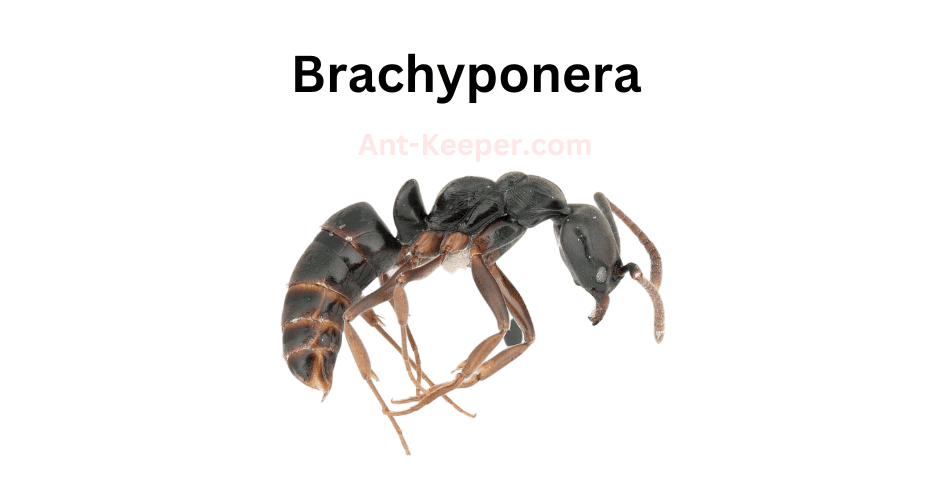
Brachyponera is a genus of ants belonging to the subfamily Ponerinae.
One of the species in this genus is Brachyponera sennaarensis, commonly known as the Sennaar ant.
These ants are relatively large, measuring up to 12mm in length, and are known for their aggressive behavior.
The workers of Brachyponera sennaarensis are dark brown in color and have a shiny exoskeleton.
They have a powerful sting and are known to attack other insects and even small vertebrates.
These ants are also known to forage for food in large groups, and can quickly overwhelm their prey.
Brachyponera sennaarensis is found in a variety of habitats, including forests, grasslands, and deserts.
They are known to build their nests in soil, under rocks, and in tree trunks.
These ants are also known to be nocturnal, and are most active during the night.
Despite their aggressive behavior, Brachyponera sennaarensis is an important part of the ecosystem.
They help to control the population of other insects and play a vital role in the food chain.
However, their powerful sting and aggressive behavior make them a potential danger to humans and other animals.
7) Calomyrmex
Calomyrmex is a genus of ants belonging to the family Formicidae.
These ants are known for their unique physical characteristics, including their elongated mandibles and slender bodies.
The workers of Calomyrmex are typically small in size, measuring between 2-4mm in length.
They are typically black or dark brown in color, with a shiny exoskeleton.
Calomyrmex ants are primarily found in tropical and subtropical regions, where they inhabit a variety of habitats including forests, grasslands, and savannas.
They are known to be highly aggressive and territorial, often engaging in fierce battles with other ant species.
One of the most interesting aspects of Calomyrmex ants is their social behavior.
These ants live in large colonies, with a single queen responsible for laying eggs and producing new workers.
The workers are responsible for foraging for food, caring for the young, and defending the colony from predators.
Calomyrmex ants are also known for their unique feeding habits.
They are omnivorous, feeding on a variety of food sources including insects, nectar, and plant sap.
They are also known to engage in a behavior known as trophallaxis, where they exchange food and other nutrients with other members of the colony.
Overall, Calomyrmex ants are fascinating creatures with a unique set of physical and behavioral characteristics.
Their aggressive nature and social behavior make them an important species to study in the field of entomology.
8) Carpenter And Sugar Ants, Camponotus

Carpenter ants and sugar ants are two common species of ants found in many regions of the world.
Carpenter ants are known for their ability to excavate wood and create nests within it.
They are typically larger in size than sugar ants and have a black or dark brown coloration.
Carpenter ants are also known for their strong mandibles, which they use to chew through wood and other materials.
Sugar ants, on the other hand, are smaller in size and have a yellow or brown coloration.
They are named for their preference for sugary foods and are often found in kitchens and other areas where food is stored.
Sugar ants are also known for their ability to form large colonies, with thousands of individual ants working together to gather food and care for their young.
Both carpenter ants and sugar ants play important roles in their ecosystems.
Carpenter ants help to break down dead wood and other plant material, which helps to recycle nutrients back into the soil.
Sugar ants help to disperse seeds and pollinate plants, which helps to maintain healthy ecosystems.
However, both species can also be pests when they invade human homes and buildings.
Carpenter ants can cause damage to wooden structures, while sugar ants can contaminate food and be a nuisance to homeowners.
It is important to take steps to prevent ant infestations and to control them if they do occur, in order to protect both human health and the health of the environment.
9) Army Ants, Cerapachys
Army ants are a type of ant that belong to the subfamily Dorylinae.
They are known for their aggressive behavior and their ability to form large colonies that can contain up to several million individuals.
Army ants are found in tropical and subtropical regions around the world, and they play an important role in the ecosystems where they live.
One of the most distinctive features of army ants is their nomadic lifestyle.
Unlike other ants that build permanent nests, army ants are constantly on the move, searching for food and new nesting sites.
They are also known for their impressive hunting skills.
When they come across prey, they swarm over it in large numbers, overwhelming it with their sheer numbers and powerful jaws.
Army ants are also social insects, with a complex hierarchy that determines the roles of each individual in the colony.
The queen is the largest ant in the colony and is responsible for laying eggs.
The workers are responsible for foraging, caring for the young, and defending the colony.
The soldiers are larger and have stronger jaws, which they use to protect the colony from predators.
Despite their aggressive behavior, army ants are an important part of many ecosystems.
They help to control the populations of other insects and small animals, and they provide food for larger predators such as birds and mammals.
In some cultures, army ants are even used as a source of food for humans.
Overall, army ants are fascinating creatures that have adapted to life in some of the most challenging environments on Earth.
Their nomadic lifestyle, impressive hunting skills, and complex social structure make them one of the most interesting species of ants in the world.
10) Colobostruma
Colobostrumabe is a fascinating species of ant that belongs to the Formicidae family.
These ants are known for their unique physical characteristics and behavior, which make them stand out from other ant species.
One of the most distinctive features of Colobostrumabe ants is their elongated mandibles, which are used for a variety of purposes, including defense and hunting.
These ants are also known for their large size, with workers measuring up to 10 millimeters in length.
Colobostrumabe ants are social insects that live in colonies, with each colony consisting of a queen, workers, and soldiers.
The queen is responsible for laying eggs, while the workers and soldiers are responsible for maintaining the colony and protecting it from predators.
These ants are omnivorous, meaning that they feed on both plant and animal matter.
They are known to forage for food in groups, with workers and soldiers working together to bring food back to the colony.
One interesting behavior of Colobostrumabe ants is their ability to form symbiotic relationships with other insects.
For example, they have been known to form mutualistic relationships with aphids, which provide them with a source of honeydew in exchange for protection from predators.
Overall, Colobostrumabe ants are a fascinating species that continue to intrigue scientists and researchers around the world.
Their unique physical characteristics and behavior make them a valuable subject of study for those interested in the ecology and behavior of social insects.
11) Acrobat Ants, Crematogaster

Acrobat ants, also known as Crematogaster spp., are a genus of ants that are found in various parts of the world.
These ants are known for their unique ability to contort their bodies and move in acrobatic ways, hence their name.
Acrobat ants are relatively small, with workers measuring between 2-5mm in length.
They are typically brown or black in color, with a slender body and long legs.
These ants are known for their aggressive behavior and will readily defend their nests against intruders.
One of the most interesting features of acrobat ants is their ability to use their mandibles to grip onto surfaces and contort their bodies in unusual ways.
This allows them to move along narrow branches, twigs, and other surfaces that would be difficult for other ants to navigate.
They are also able to use this ability to escape from predators, such as birds and other insects.
Acrobat ants are omnivorous, meaning that they will eat both plant and animal matter.
They are known to feed on insects, nectar, and honeydew, as well as fruits and seeds.
These ants are also known to tend to aphids, protecting them from predators in exchange for the sweet honeydew that the aphids produce.
In terms of their social structure, acrobat ants are typically organized into colonies that are led by a queen.
The queen is responsible for laying eggs, while the workers are responsible for foraging, caring for the young, and defending the nest.
Overall, acrobat ants are fascinating creatures that have adapted unique abilities to survive in their environments.
Their acrobatic abilities and aggressive behavior make them a formidable force in the insect world.
12) Cryptic Ants, Cryptopone
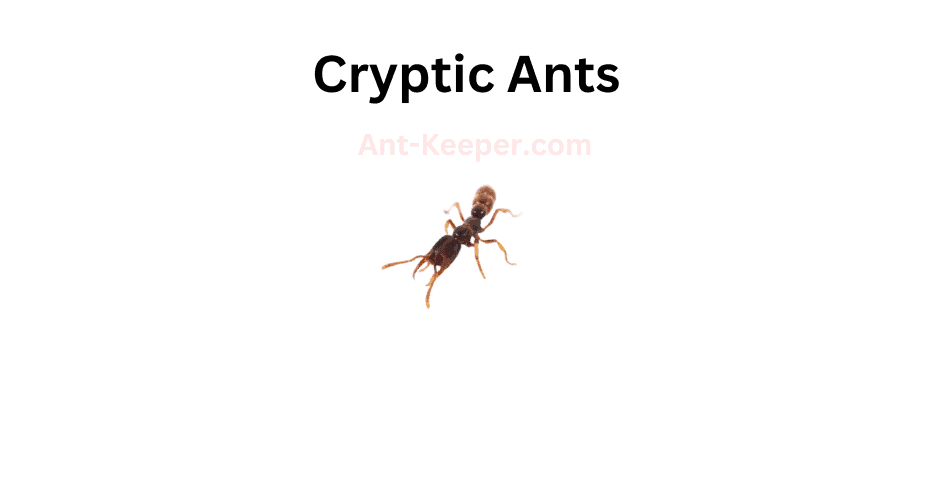
Cryptic ants are a species of ants that are known for their ability to blend in with their surroundings.
They are typically small in size, measuring only a few millimeters in length, and have a dark brown or black coloration that helps them to remain inconspicuous.
One of the most interesting features of cryptic ants is their ability to mimic the appearance of other insects.
For example, some species of cryptic ants have been observed mimicking the appearance of spiders, which helps them to avoid detection by predators that might otherwise prey on them.
Cryptic ants are also known for their highly social behavior.
They live in large colonies that can contain thousands of individuals, and they work together to gather food, care for their young, and defend their territory from other ants and predators.
Despite their small size, cryptic ants play an important role in their ecosystem.
They help to aerate the soil, control pest populations, and provide food for other animals.
In addition, they are an important food source for many birds and other predators.
Overall, cryptic ants are a fascinating species of ants that have evolved a number of unique adaptations to help them survive in their environment.
Their ability to blend in with their surroundings and mimic other insects is just one example of the many ways in which they have adapted to their surroundings over time.
13) Discothyrea
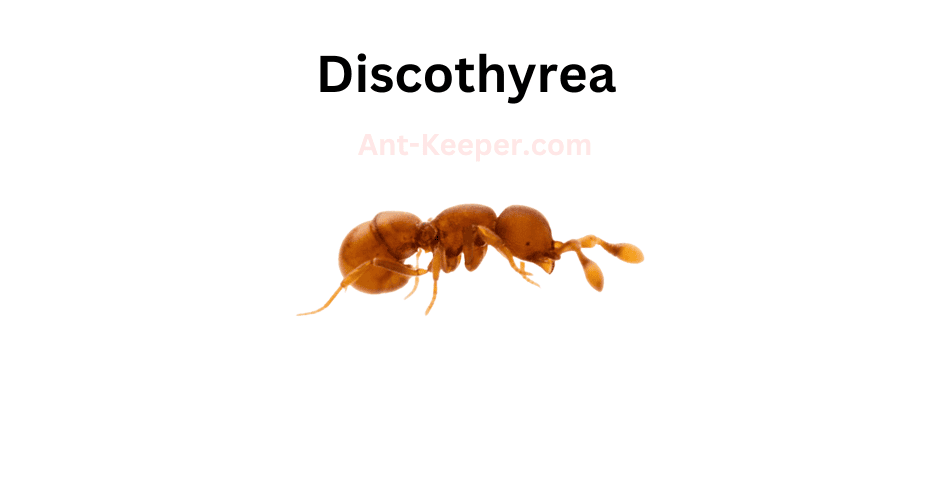
Discothyreabe is a species of ant that belongs to the Formicidae family.
These ants are known for their unique physical characteristics, including their elongated mandibles and slender bodies.
The workers of this species are typically around 3-4mm in length, while the queen can grow up to 7mm.
Discothyreabe ants are primarily found in forested areas, where they build their nests in soil or leaf litter.
They are known to be aggressive towards other ant species and will defend their territory fiercely.
These ants are also known to be nocturnal, which means they are most active during the night.
One of the most interesting aspects of Discothyreabe ants is their feeding habits.
They are known to be generalist feeders, which means they will eat a wide variety of foods.
They have been observed feeding on insects, nectar, and even carrion.
This adaptability allows them to thrive in a variety of environments.
Despite their small size, Discothyreabe ants play an important role in their ecosystem.
They help to control insect populations and contribute to soil health through their nest-building activities.
They are also an important food source for many other animals, including birds and small mammals.
Overall, Discothyreabe ants are a fascinating species that have adapted to thrive in a variety of environments.
Their unique physical characteristics and feeding habits make them an important part of their ecosystem.
14) Doleromyrma
Doleromyrmabe is a species of ant that belongs to the family Formicidae.
These ants are known for their unique physical characteristics and behavior.
They have a dark brown or black coloration and are relatively small in size, measuring around 2-3 mm in length.
One of the most distinctive features of Doleromyrmabe ants is their mandibles, which are elongated and curved.
These mandibles are used for a variety of purposes, including hunting, defense, and nest building.
The ants are also known for their aggressive behavior, and will not hesitate to attack intruders or other ants that they perceive as a threat.
Doleromyrmabe ants are typically found in forested areas, where they build their nests in soil or leaf litter.
They are omnivorous, feeding on a variety of insects, fruits, and seeds.
The ants are also known to engage in mutualistic relationships with other insects, such as aphids, which they protect in exchange for a sugary substance called honeydew.
Despite their small size, Doleromyrmabe ants play an important role in their ecosystem.
They help to control insect populations, disperse seeds, and aerate soil.
However, like many other ant species, they are also vulnerable to habitat loss and other environmental threats.
Overall, Doleromyrmabe ants are fascinating creatures that have adapted to survive in a variety of environments.
Their unique physical characteristics and behavior make them a valuable subject of study for scientists and nature enthusiasts alike.
15) Dolly Ants, Dolichoderus

Dolly Ants, also known as Dolichoderus spp., are a species of ant that belong to the family Formicidae.
These ants are known for their distinctive elongated heads and bodies, which give them a unique appearance compared to other ant species.
Dolly Ants are typically found in forested areas, where they build their nests in soil or under rocks.
They are known to be highly social insects, living in large colonies that can contain thousands of individuals.
Within these colonies, there is a strict division of labor, with different ants taking on specific roles such as foraging, caring for the young, and defending the colony.
One interesting aspect of Dolly Ant behavior is their use of chemical communication.
These ants use pheromones to communicate with each other, leaving trails of scent that other ants can follow to locate food sources or to find their way back to the nest.
They also use pheromones to signal danger, which can trigger a coordinated response from the colony to defend against predators.
Dolly Ants are omnivorous, feeding on a variety of foods including insects, nectar, and plant sap.
They are also known to have a mutualistic relationship with certain plant species, where they protect the plants from herbivores in exchange for a source of food.
Overall, Dolly Ants are a fascinating species of ant with unique physical and behavioral characteristics.
Their social structure and use of chemical communication make them an important subject of study for researchers interested in understanding the behavior of social insects.
16) Echinopla
Echinoplabe is a species of ant that belongs to the Formicidae family.
These ants are known for their unique physical characteristics, including their spiny exoskeletons and elongated mandibles.
The workers of this species are typically around 4-5mm in length and are reddish-brown in color.
Echinoplabe ants are primarily found in forested areas and are known to be arboreal, meaning they live in trees.
They are also known to be aggressive and territorial, often engaging in battles with other ant species for resources and territory.
One interesting aspect of Echinoplabe ants is their diet.
They are known to feed on a variety of food sources, including insects, nectar, and even small vertebrates such as lizards and frogs.
This diverse diet allows them to thrive in a variety of environments and adapt to changing conditions.
Overall, Echinoplabe ants are a fascinating species with unique physical characteristics and behaviors.
Their ability to adapt to different environments and food sources makes them an important part of their ecosystem.
17) Epopostruma
Epopostrumabe is a species of ant that belongs to the Formicidae family.
These ants are known for their unique physical characteristics, including their elongated mandibles and slender bodies.
They are typically found in forested areas and are known to be active during the day.
Epopostrumabe ants are social insects that live in colonies.
The colonies are typically made up of a queen ant, worker ants, and male ants.
The queen ant is responsible for laying eggs, while the worker ants are responsible for foraging for food and caring for the young.
These ants are omnivorous and will eat a variety of foods, including insects, nectar, and seeds.
They are also known to have a symbiotic relationship with certain species of plants, where they will protect the plant from herbivores in exchange for food.
Epopostrumabe ants are important members of their ecosystem, as they help to control insect populations and aid in the dispersal of seeds.
They are also used in scientific research, as their unique physical characteristics make them an interesting subject for study.
Overall, Epopostrumabe ants are fascinating creatures that play an important role in their environment.
Their unique physical characteristics and social behavior make them a valuable addition to the world of ants.
18) Eurhopalothrix

Eurhopalothrix is a genus of ants that belongs to the subfamily Myrmicinae.
The ants in this genus are small and have a distinctive appearance, with elongated bodies and long, thin legs.
They are known for their unique behavior of using their mandibles to hold onto the legs of their nestmates while they move around, which is thought to help them navigate through their complex nest structures.
Eurhopalothrix ants are found in a variety of habitats, including forests, grasslands, and deserts.
They are typically found in the soil or leaf litter, where they forage for food and build their nests.
These ants are omnivorous, feeding on a variety of small insects, fungi, and plant material.
One species of Eurhopalothrix that has been studied extensively is Eurhopalothrix heliscata.
This ant is known for its unique nest structure, which consists of a series of interconnected chambers and tunnels.
The ants in this species are also known for their aggressive behavior towards other ant species, and will often attack and kill intruders that enter their territory.
Overall, Eurhopalothrix ants are fascinating creatures that play an important role in their ecosystems.
Their unique behavior and nest structures make them a subject of interest for researchers studying ant behavior and ecology.
19) Gnamptogenys
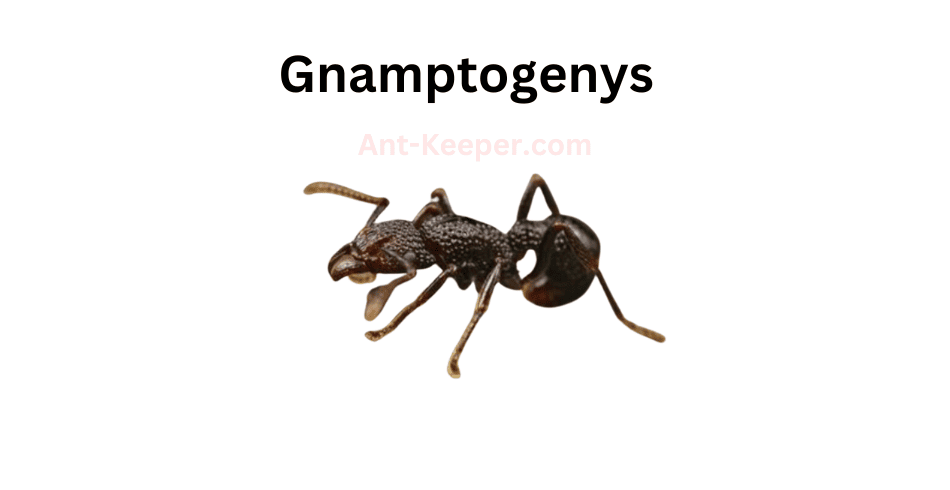
Gnamptogenys is a genus of ants that belongs to the subfamily Ectatomminae.
These ants are known for their predatory behavior and are commonly found in tropical regions.
The genus Gnamptogenys is characterized by their elongated mandibles, which are used to capture and subdue their prey.
Gnamptogenys ants are typically small in size, measuring between 2-5mm in length.
They have a dark brown or black coloration and a slender body shape.
These ants are known for their aggressive behavior and are often found hunting in groups.
One of the unique features of Gnamptogenys ants is their ability to use their mandibles to capture and subdue prey that is much larger than themselves.
They are also known to use their mandibles to defend their nests from predators.
Gnamptogenys ants are primarily found in forested areas, where they hunt for insects and other small invertebrates.
They are also known to scavenge for food, and will often feed on dead insects and other organic matter.
Overall, Gnamptogenys ants are fascinating creatures that play an important role in their ecosystem.
Their predatory behavior helps to control insect populations, while their scavenging behavior helps to recycle organic matter.
20) Heteroponera
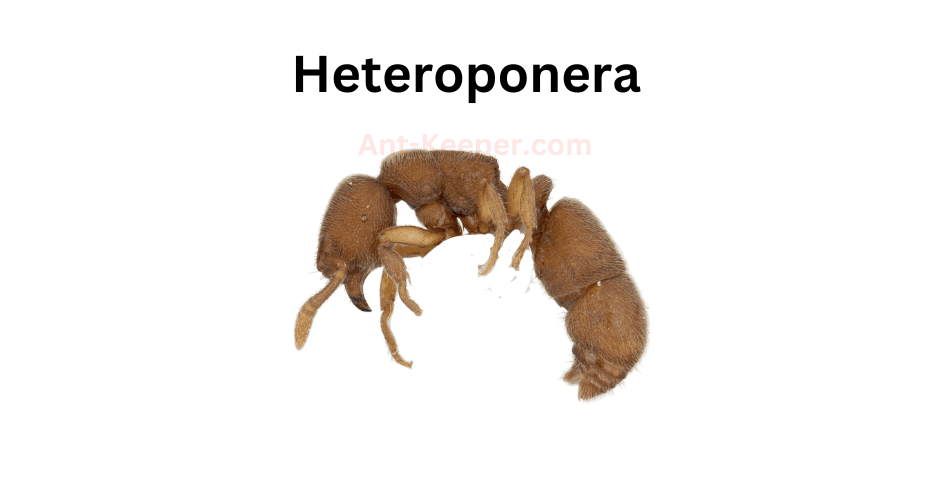
Heteroponerabe is a species of ant that belongs to the Heteroponera genus.
These ants are known for their aggressive behavior and are often found in forested areas.
They have a dark brown or black coloration and are relatively small in size, measuring around 5-7mm in length.
Heteroponerabe ants are solitary hunters and are known to be very efficient at capturing prey.
They have strong mandibles that they use to subdue their prey, which can include other insects, spiders, and even small vertebrates.
These ants are also known to scavenge for food, and will often feed on the carcasses of dead animals.
One interesting aspect of Heteroponerabe ants is their reproductive behavior.
Unlike many other ant species, Heteroponerabe queens do not mate with multiple males.
Instead, they mate with a single male and then store his sperm in a specialized organ called the spermatheca.
This allows the queen to fertilize her eggs over a long period of time, without the need for repeated mating.
Overall, Heteroponerabe ants are fascinating creatures that play an important role in their ecosystem.
While they may be aggressive and intimidating, they are also highly efficient hunters and scavengers that help to keep their environment in balance.
21) Crypt Ants, Hypoponera

Crypt ants, also known as fungus-growing ants, are a group of ants that cultivate fungi for food.
They are found in various habitats, including forests, grasslands, and deserts.
Crypt ants are known for their unique nesting behavior, as they construct underground chambers to house their fungal gardens.
These ants have a symbiotic relationship with the fungi they cultivate.
The ants provide the fungi with a suitable environment for growth, while the fungi provide the ants with a source of food.
The ants also protect their fungal gardens from other insects and parasites.
Crypt ants are social insects, living in colonies that can range from a few dozen to several thousand individuals.
The colonies are organized into castes, with the queen being the largest and most important member.
The queen is responsible for laying eggs, while the workers are responsible for tending to the fungal gardens and caring for the young.
One interesting aspect of crypt ants is their ability to create "satellite" nests.
These nests are smaller chambers located near the main nest, and they serve as storage areas for food and as a place for the queen to lay eggs.
The satellite nests are connected to the main nest by underground tunnels, allowing the ants to move between them.
Overall, crypt ants are fascinating insects that have developed a unique way of obtaining food.
Their symbiotic relationship with fungi and their complex nesting behavior make them an important species to study in the field of entomology.
22) Iridomyrmex
Iridomyrmex is a genus of ants that belongs to the family Formicidae.
These ants are commonly known as sugar ants or meat ants.
The species Iridomyrmex is a small, black ant that measures about 3-4 mm in length.
They have a slender body with a narrow waist and long legs.
The head of the ant is slightly elongated and has a pair of large compound eyes.
The antennae are also long and slender.
Iridomyrmex ants are known for their aggressive behavior and are often seen in large numbers.
They are omnivorous and feed on a variety of food sources, including nectar, honeydew, insects, and other small animals.
They are also known to scavenge on dead animals and carrion.
These ants are social insects and live in colonies that can range in size from a few hundred to several thousand individuals.
The colony is usually headed by a queen ant, who is responsible for laying eggs and reproducing.
The workers are responsible for foraging, caring for the young, and defending the colony.
Iridomyrmex ants are found in a variety of habitats, including forests, grasslands, and urban areas.
They are known to be particularly abundant in areas with high levels of human activity, such as parks and gardens.
Overall, Iridomyrmex ants are fascinating creatures that play an important role in their ecosystems.
While they may be a nuisance to humans at times, they are an essential part of the food chain and help to keep other insect populations in check.
23) Iroponera
Iroponerabe is a species of ant that belongs to the scientific family Formicidae.
These ants are known for their unique physical characteristics and behavior patterns.
They are small in size, measuring only a few millimeters in length, and have a dark brown or black coloration.
One of the most distinctive features of Iroponerabe ants is their mandibles.
These are long and slender, and are used to capture prey and defend their colony.
They also have a pair of large compound eyes, which give them excellent vision and help them navigate their environment.
Iroponerabe ants are social insects, living in large colonies that can contain thousands of individuals.
They have a hierarchical social structure, with a queen at the top and workers and soldiers below her.
The queen is responsible for laying eggs, while the workers and soldiers take care of the colony and protect it from predators.
These ants are omnivorous, feeding on a variety of foods including insects, nectar, and plant sap.
They are also known to cultivate fungi, which they use as a food source.
Iroponerabe ants play an important role in their ecosystem, helping to control the populations of other insects and contributing to soil health through their activities.
They are also a fascinating subject of study for scientists, who are interested in understanding their behavior and biology.
24) Leptanilla
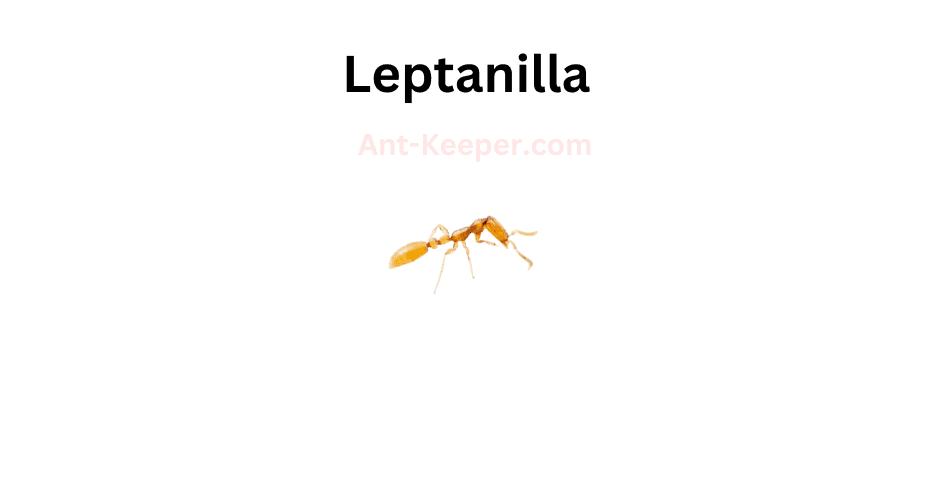
Leptanilla is a genus of ants that belongs to the subfamily Leptanillinae.
These ants are known for their small size and subterranean lifestyle.
They are typically found in tropical and subtropical regions, where they live in soil and leaf litter.
Leptanilla ants are unique in their morphology, with elongated bodies and long, slender legs.
They have small eyes and lack the ability to sting, relying instead on their powerful mandibles to defend themselves.
These ants are also known for their unusual behavior, with some species exhibiting a caste system where workers are divided into "major" and "minor" forms.
Despite their small size, Leptanilla ants play an important role in their ecosystems.
They are known to feed on small invertebrates and help to aerate soil through their burrowing activities.
Some species have also been observed engaging in mutualistic relationships with other insects, such as termites and beetles.
Due to their subterranean lifestyle, Leptanilla ants are not often encountered by humans.
However, they are of interest to researchers studying the evolution and behavior of social insects.
Their unique morphology and behavior make them a fascinating subject for scientific study.
25) Linepithema

Linepithema is a genus of ants that belongs to the subfamily Dolichoderinae.
The ants in this genus are small in size, measuring between 1.5 to 3 millimeters in length.
They are known for their ability to form large colonies, which can consist of thousands of individuals.
Linepithema ants are typically found in urban and suburban areas, where they feed on a variety of food sources, including sweets, meats, and fats.
They are also known to feed on the honeydew produced by aphids and other insects.
One of the most interesting aspects of Linepithema ants is their ability to form supercolonies.
These supercolonies can span hundreds of meters and contain millions of individuals.
This is made possible by the ants' ability to recognize and tolerate individuals from other colonies, which allows them to merge and form larger groups.
Despite their small size, Linepithema ants are known for their aggressive behavior.
They will defend their territory and food sources fiercely, often attacking other ants and insects that come too close.
They are also known to be able to adapt quickly to changing environments, which has allowed them to thrive in many different parts of the world.
Overall, Linepithema ants are fascinating creatures that have adapted to life in urban and suburban environments.
Their ability to form supercolonies and adapt quickly to changing conditions has made them a successful and resilient species.
26) Lordomyrma
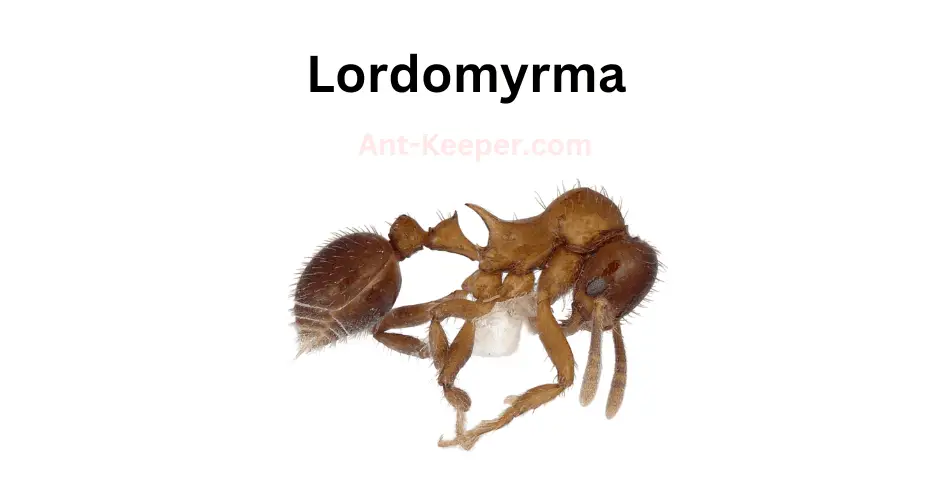
Lordomyrmabe is a genus of ants belonging to the family Formicidae.
These ants are known for their unique physical characteristics and behavior.
They are small in size, measuring between 2-3 mm in length, and have a distinctively elongated head and mandibles.
The workers of this genus are polymorphic, meaning they come in different sizes and shapes.
Lordomyrmabe ants are known to be arboreal, meaning they live in trees and other elevated structures.
They are also known to be aggressive and territorial, often engaging in battles with other ant species for resources and territory.
These ants are omnivorous, feeding on a variety of food sources including insects, nectar, and honeydew.
One of the most interesting aspects of Lordomyrmabe ants is their reproductive behavior.
The queen ant is known to mate with multiple males, resulting in a genetically diverse colony.
The queen is also capable of reproducing asexually, producing clones of herself.
Overall, Lordomyrmabe ants are fascinating creatures with unique physical and behavioral characteristics.
Their arboreal lifestyle, aggressive behavior, and reproductive strategies make them a fascinating subject for scientific study.
27) Mayriella
Mayriellabe is a species of ant that belongs to the Formicidae family.
These ants are known for their unique physical characteristics and behavior.
They have a dark brown or black coloration and are relatively small in size, measuring around 2-3 millimeters in length.
One of the most distinctive features of Mayriellabe ants is their elongated mandibles, which are used for a variety of tasks such as digging, carrying food, and defending their colony.
They are also known for their aggressive behavior towards other ant species and will often engage in territorial disputes.
Mayriellabe ants are typically found in forested areas and are known to build their nests in soil or leaf litter.
They are omnivorous and will feed on a variety of food sources including insects, nectar, and plant sap.
Despite their small size, Mayriellabe ants play an important role in their ecosystem.
They help to aerate the soil, control insect populations, and provide food for other animals such as birds and reptiles.
Overall, Mayriellabe ants are a fascinating species that continue to intrigue scientists and nature enthusiasts alike.
28) Melophorus
Melophorus is a genus of ants that belongs to the family Formicidae.
These ants are commonly found in various habitats such as forests, grasslands, and deserts.
The genus Melophorus is known for its diverse species, with over 100 species identified so far.
Melophorus ants are small in size, ranging from 2 to 5 millimeters in length.
They have a distinctive appearance, with a slender body and elongated mandibles.
The color of these ants varies from black to brown, and some species have a metallic sheen on their exoskeleton.
These ants are known for their aggressive behavior and are often seen engaging in territorial battles with other ant species.
They are also known to be scavengers, feeding on a variety of food sources such as dead insects, nectar, and honeydew.
One of the most interesting aspects of Melophorus ants is their ability to navigate using visual cues.
They have been observed using landmarks and the position of the sun to navigate back to their nest.
This is a unique trait among ants, as most species rely on chemical cues to navigate.
Melophorus ants are also known for their complex social structure.
They live in colonies that can range from a few dozen to several thousand individuals.
The colony is led by a queen, who is responsible for laying eggs and maintaining the social order within the colony.
In conclusion, Melophorus ants are a fascinating genus of ants that exhibit unique traits such as visual navigation and complex social structures.
Their diversity and adaptability have allowed them to thrive in various habitats around the world.
29) Shield Ants, Meranoplus
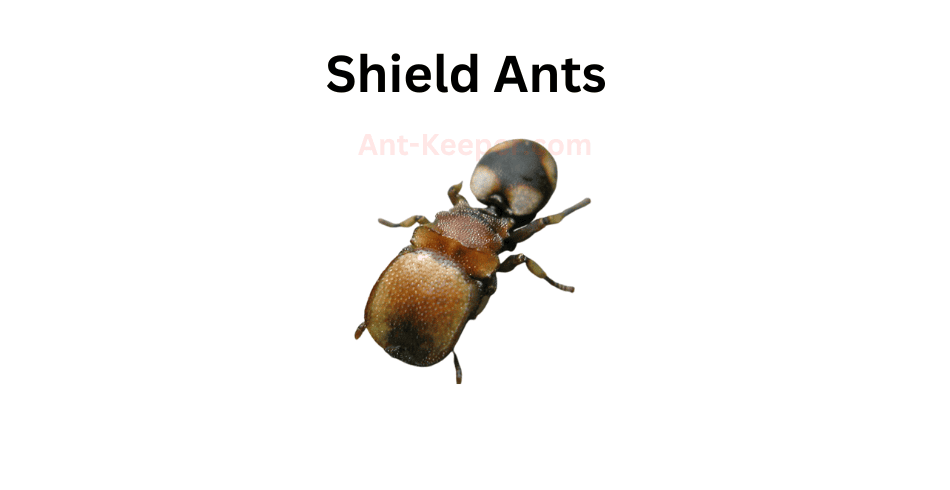
Shield ants, also known as turtle ants, are a species of ant that belong to the genus Cephalotes.
They are found in tropical regions and are known for their unique physical characteristics.
One of the most distinctive features of shield ants is their flattened, disc-shaped head.
This head shape allows them to block the entrance to their nests, protecting them from predators and other threats.
In addition, shield ants have long, spindly legs that allow them to move quickly and easily through the forest canopy.
Shield ants are social insects and live in large colonies.
They are known for their complex communication systems, which involve chemical signals and physical gestures.
They also have a division of labor within their colonies, with different ants taking on different roles such as foraging, nest building, and caring for the young.
One interesting behavior of shield ants is their use of "backpacks." Some worker ants will carry small pieces of leaves or other materials on their backs as they move through the forest.
It is believed that these backpacks may serve as camouflage or protection from predators.
Overall, shield ants are a fascinating species of ant with unique physical and behavioral adaptations that allow them to thrive in their tropical habitats.
30) Metapone

Metaponebe is a species of ant that belongs to the subfamily Ponerinae.
These ants are known for their small size, with workers measuring only a few millimeters in length.
They are typically found in forested areas, where they live in small colonies consisting of a queen and a few dozen workers.
One of the most interesting features of Metaponebe ants is their unique mandibles.
Unlike most ants, which have sharp, pointed mandibles for biting and cutting, Metaponebe ants have flattened, spoon-shaped mandibles that are used for scooping up small prey.
This adaptation allows them to feed on a variety of insects and other small invertebrates that other ants might not be able to catch.
Metaponebe ants are also known for their aggressive behavior.
They will defend their nests fiercely against intruders, and will even attack much larger animals if they feel threatened.
Despite their small size, these ants are not to be underestimated.
Overall, Metaponebe ants are fascinating creatures that have adapted to their environment in unique ways.
Their small size and specialized mandibles make them well-suited for life in the forest, and their aggressive behavior ensures that they are able to protect their colonies from harm.
31) Trailing Pharaoh And Timid Ants, Monomorium

The Trailing Pharaoh ant, also known as the Monomorium pharaonis, is a small, reddish-brown ant species that is commonly found in urban areas.
These ants are known for their ability to form large colonies, which can consist of thousands of individuals.
One interesting behavior of the Trailing Pharaoh ant is their tendency to trail behind other ants.
This behavior is thought to be a form of communication, as the trailing ants are able to follow the scent trail left by the leading ants.
This behavior is also used to locate food sources, as the trailing ants are able to follow the trail to the source of the food.
In contrast to the bold behavior of the Trailing Pharaoh ant, the Timid ant, also known as the Temnothorax species, is a much more cautious species.
These ants are small and brown, and are often found in wooded areas.
They are known for their timid behavior, and will often retreat into their nests when threatened.
Despite their timid nature, the Timid ant is still able to form large colonies.
They are also known for their ability to adapt to changing environments, and can be found in a variety of habitats, including forests, meadows, and even urban areas.
Overall, both the Trailing Pharaoh ant and the Timid ant are fascinating species that demonstrate unique behaviors and adaptations.
By studying these ants, scientists can gain a better understanding of the complex social behaviors and ecological roles of ants in their respective environments.
32) Myopias
Myopiasbe is a species of ant that belongs to the Formicidae family.
These ants are known for their small size, measuring only a few millimeters in length.
They have a dark brown or black coloration and a slender body shape.
Myopiasbe ants are typically found in forested areas, where they build their nests in soil or leaf litter.
These ants are known to be omnivorous, feeding on a variety of food sources including insects, nectar, and plant sap.
They are also known to be aggressive towards other ant species, often engaging in territorial disputes.
Myopiasbe ants have a unique reproductive system, with queens producing both male and female offspring.
The males are typically smaller than the females and have wings, while the females are wingless and larger in size.
These ants play an important role in their ecosystem, serving as prey for larger animals and helping to control insect populations.
They also contribute to soil health by aerating the soil and distributing nutrients.
Overall, Myopiasbe ants are a fascinating species with unique characteristics and important ecological roles.
33) Myrmecia
Myrmecia is a genus of ants that belongs to the family Formicidae.
These ants are commonly known as bull ants or jack-jumpers due to their aggressive nature and ability to jump.
Myrmecia ants are found in various habitats, including forests, woodlands, and grasslands.
The Myrmecia ant is a large and robust insect, with workers ranging from 8 to 40 millimeters in length.
They have a distinctive appearance, with long mandibles and a powerful sting.
The coloration of Myrmecia ants varies depending on the species, but they are typically black, red, or brown.
Myrmecia ants are known for their aggressive behavior and are considered one of the most dangerous ant species in the world.
They are highly territorial and will attack anything that enters their territory, including humans.
Their powerful mandibles and venomous sting make them a formidable opponent.
Despite their aggressive nature, Myrmecia ants play an important role in their ecosystem.
They are predators, feeding on other insects and small animals.
They also help to aerate the soil and distribute seeds, contributing to the growth and health of their environment.
In conclusion, the Myrmecia ant is a fascinating and formidable insect.
Their aggressive behavior and powerful sting make them a force to be reckoned with, but they also play an important role in their ecosystem.
34) Myrmecorhynchus
Myrmecorhynchus is a genus of ants belonging to the subfamily Myrmicinae.
These ants are known for their unique mandibles that are elongated and curved downwards, resembling a bird's beak.
The name Myrmecorhynchus is derived from the Greek words "myrmex" meaning ant and "rhynchos" meaning beak.
The ants in this genus are small in size, measuring between 2-4mm in length.
They are typically found in forested areas and are known to nest in soil or leaf litter.
Myrmecorhynchus ants are omnivorous, feeding on both plant and animal matter.
They are also known to have a mutualistic relationship with certain plant species, where they protect the plants from herbivores in exchange for food.
Myrmecorhynchus ants are known for their aggressive behavior and will defend their nests fiercely.
They are also known to have a unique defense mechanism where they will use their mandibles to grip onto an attacker and then release a sticky substance from their gaster to immobilize them.
Overall, Myrmecorhynchus ants are fascinating creatures with unique physical and behavioral characteristics that make them stand out among other ant species.
35) Nebothriomyrmex
Nebothriomyrmex is a genus of ants that belongs to the subfamily Dolichoderinae.
The ants in this genus are small in size, measuring between 1.5 to 2.5 millimeters in length.
They are known for their distinctive morphology, which includes a unique shape of the mandibles and the presence of a specialized gland on the head.
Nebothriomyrmex ants are typically found in forested areas, where they live in small colonies.
They are known to be arboreal, meaning that they live in trees and other vegetation.
The ants are also known to be predatory, feeding on other insects and small arthropods.
One of the most interesting features of Nebothriomyrmex ants is their ability to produce a specialized secretion from a gland on their head.
This secretion is used to mark trails and communicate with other members of the colony.
The ants are also known to use this secretion to defend themselves against predators.
Overall, Nebothriomyrmex ants are a fascinating group of insects that play an important role in forest ecosystems.
Their unique morphology and behavior make them an interesting subject for scientific study, and further research is needed to fully understand their ecology and behavior.
36) Notoncus
Notoncus is a small ant species that is commonly found in various parts of the world.
These ants are known for their unique physical characteristics, which make them easily distinguishable from other ant species.
Notoncus ants are relatively small in size, measuring only a few millimeters in length.
They have a dark brown or black coloration, with a shiny and smooth exoskeleton.
Their heads are slightly elongated, with large mandibles that they use to capture prey and defend their colony.
One of the most interesting features of Notoncus ants is their ability to jump.
These ants have powerful hind legs that allow them to leap several times their body length.
This is a useful adaptation for hunting and escaping predators.
Notoncus ants are also known for their aggressive behavior.
They are highly territorial and will fiercely defend their colony against any intruders.
They are also known to engage in battles with other ant species, often resulting in the death of many ants.
Despite their aggressive nature, Notoncus ants are important members of their ecosystem.
They play a crucial role in controlling the population of other insects and invertebrates, and they also help to aerate the soil and distribute nutrients.
Overall, Notoncus ants are fascinating creatures that have adapted to survive in a variety of environments.
Their unique physical characteristics and behavior make them a fascinating subject for study and observation.
37) Notostigma
Notostigma is a genus of ants that belongs to the subfamily Myrmicinae.
These ants are small in size, measuring only a few millimeters in length.
They are known for their distinctive appearance, which includes a unique shape of the petiole (the narrow waist between the thorax and abdomen) and the presence of a small spine on the back of the thorax.
Notostigma ants are typically found in forested areas, where they live in small colonies.
They are known to be aggressive towards other ant species and will defend their territory fiercely.
These ants are also known to be omnivorous, feeding on a variety of food sources including insects, nectar, and plant sap.
One interesting behavior of Notostigma ants is their ability to form "rafts" when their colony is threatened by flooding.
The ants will link together and form a floating mass that can survive for several days until the water recedes.
Overall, Notostigma ants are a fascinating species with unique physical characteristics and interesting behaviors.
While they may not be well-known outside of the scientific community, they play an important role in their ecosystem and are a valuable subject of study for researchers.
38) Crazy Ants, Nylanderia

Crazy ants, also known as Nylanderia fulva, are a species of ant that belong to the family Formicidae.
They are small in size, measuring only about 2.2 to 3 mm in length, and are reddish-brown in color.
These ants are known for their erratic and unpredictable behavior, hence the name "crazy ants."
Crazy ants are native to South America, but have since spread to other parts of the world, including North America, Asia, and Australia.
They are highly adaptable and can thrive in a variety of environments, including urban areas, forests, and grasslands.
One of the most notable characteristics of crazy ants is their ability to form large colonies with multiple queens.
This allows them to quickly establish themselves in new areas and outcompete other ant species.
Crazy ants are also known for their aggressive behavior towards other insects and animals, including humans.
In addition to their aggressive behavior, crazy ants are also known for their ability to cause damage to electrical equipment.
They are attracted to electrical currents and can easily short-circuit electronics, causing damage and potentially starting fires.
Despite their small size, crazy ants are a formidable species that can have a significant impact on their environment.
As they continue to spread to new areas, it is important to monitor their behavior and take steps to control their populations in order to minimize their impact on ecosystems and human infrastructure.
39) Ochetellus

Ochetellus is a genus of ants that belongs to the subfamily Dolichoderinae.
These ants are small in size, measuring between 2-5 mm in length.
They are known for their distinctive appearance, with a slender and elongated body that is covered in fine hairs.
The head of Ochetellus ants is also elongated, with large mandibles that are used for hunting and defense.
Ochetellus ants are social insects that live in colonies.
The colonies are typically small, with only a few hundred individuals.
The queen is the largest member of the colony and is responsible for laying eggs.
The workers, which are all female, are responsible for foraging, caring for the young, and defending the colony.
Ochetellus ants are omnivorous, meaning they eat both plant and animal matter.
They are known to feed on insects, nectar, and honeydew.
They are also known to tend to aphids, which produce honeydew that the ants feed on.
Ochetellus ants are found in a variety of habitats, including forests, grasslands, and deserts.
They are known to be particularly abundant in areas with sandy soils.
These ants are important members of their ecosystems, playing a role in seed dispersal and soil health.
Overall, Ochetellus ants are fascinating insects that are well adapted to their environments.
Their unique appearance and behavior make them a popular subject of study for entomologists and nature enthusiasts alike.
40) Orectognathus
Orectognathus is a genus of ants belonging to the family Formicidae.
The ants in this genus are known for their elongated mandibles, which are used for capturing prey and defending their colonies.
Orectognathus ants are typically found in forested areas and are known to be active foragers, often hunting for insects and other small invertebrates.
The workers of Orectognathus ants are typically small in size, measuring between 2-5mm in length.
They are typically reddish-brown in color and have a distinctively elongated head and mandibles.
The queen ants are larger in size, measuring up to 10mm in length, and are responsible for laying eggs and maintaining the colony.
Orectognathus ants are known to be highly territorial and will aggressively defend their colonies against intruders.
They are also known to be highly adaptable and can thrive in a variety of different environments, including both tropical and temperate regions.
Despite their small size, Orectognathus ants play an important role in their ecosystems.
They are known to be important predators of other insects and can help to control populations of pests in their habitats.
Additionally, they are an important food source for many other animals, including birds and small mammals.
Overall, Orectognathus ants are fascinating creatures that play an important role in their ecosystems.
Their unique physical characteristics and behaviors make them a fascinating subject of study for scientists and nature enthusiasts alike.
41) Papyrius
Papyrius is a species of ant that belongs to the Formicidae family.
These ants are known for their unique physical characteristics and behavior.
Papyrius ants are typically small in size, measuring only a few millimeters in length.
They have a dark brown or black coloration and a slender body shape.
One of the most distinctive features of Papyrius ants is their ability to build intricate nests.
These ants construct their nests out of a combination of soil, plant material, and other debris.
The nests are typically located underground and can be quite extensive, with multiple chambers and tunnels.
Papyrius ants are also known for their aggressive behavior.
They are highly territorial and will defend their nests against any perceived threats.
This can include other ant species, as well as larger animals.
In terms of diet, Papyrius ants are omnivores.
They will consume a variety of foods, including insects, plant material, and even other ants.
They are also known to have a symbiotic relationship with certain plant species, where they will protect the plants in exchange for a source of food.
Overall, Papyrius ants are fascinating creatures that play an important role in their ecosystem.
Their unique physical characteristics and behavior make them a subject of interest for scientists and nature enthusiasts alike.
42) Peronomyrmex
Peronomyrmex is a genus of ants that belongs to the subfamily Myrmicinae.
These ants are known for their aggressive behavior and are commonly found in arid regions.
The workers of Peronomyrmex are small in size, measuring around 3-4 mm in length.
They have a dark brown or black coloration and possess a pair of large mandibles that they use to defend their colony.
Peronomyrmex ants are known to be granivorous, meaning they primarily feed on seeds.
They have been observed collecting and storing seeds in their nests, which they later consume.
These ants are also known to prey on other insects and arthropods, such as termites and spiders.
The colonies of Peronomyrmex are relatively small, consisting of only a few hundred individuals.
They typically nest in sandy or rocky soil, often under rocks or in crevices.
The nests are usually shallow and have a single entrance.
One interesting behavior of Peronomyrmex ants is their ability to sting multiple times.
Unlike other ants that can only sting once, Peronomyrmex ants have a smooth stinger that allows them to sting repeatedly.
This makes them particularly effective at defending their colony against predators.
Overall, Peronomyrmex ants are fascinating creatures that have adapted to survive in harsh, arid environments.
Their aggressive behavior and unique stinging ability make them a formidable opponent for any potential threats to their colony.
43) Big Headed Ants, Pheidole

Big Headed Ants, also known as Pheidole megacephala, are a species of ant that belong to the family Formicidae.
These ants are known for their distinctive large heads, which are used for defense and communication within their colonies.
Big Headed Ants are typically found in tropical and subtropical regions, where they build their nests in soil, leaf litter, and other organic matter.
They are omnivorous, feeding on a variety of insects, seeds, and other small organisms.
One of the most interesting aspects of Big Headed Ants is their social behavior.
They live in large colonies, with a queen ant at the center of the hierarchy.
The queen is responsible for laying eggs, while the other ants in the colony perform various tasks such as foraging for food, caring for the young, and defending the colony from predators.
Big Headed Ants are also known for their ability to displace other ant species in their habitats.
They are aggressive and have been known to attack and kill other ants, as well as compete with them for resources.
Despite their aggressive behavior, Big Headed Ants are not considered a major pest species.
However, their ability to displace other ant species and their potential impact on native ecosystems make them an important species to study and monitor.
44) Philidris
Philidrisbe is a species of ant that belongs to the family Formicidae.
These ants are known for their small size and unique physical characteristics.
They have a dark brown or black coloration and are typically less than 2 millimeters in length.
One of the most distinctive features of Philidrisbe ants is their elongated mandibles.
These mandibles are used for a variety of tasks, including capturing prey and defending the colony.
Despite their small size, these ants are known for their aggressive behavior and will not hesitate to attack intruders.
Philidrisbe ants are typically found in forested areas, where they build their nests in soil or leaf litter.
They are known for their ability to form large colonies, which can contain thousands of individuals.
These colonies are highly organized, with each ant having a specific role to play in the colony's survival.
One of the most interesting aspects of Philidrisbe ants is their relationship with other insects.
These ants are known to form symbiotic relationships with aphids, which provide them with a source of honeydew.
In exchange, the ants protect the aphids from predators and parasites.
Overall, Philidrisbe ants are a fascinating species that play an important role in their ecosystem.
Their unique physical characteristics and behavior make them a subject of interest for scientists and nature enthusiasts alike.
45) Restless Ants, Plagiolepis
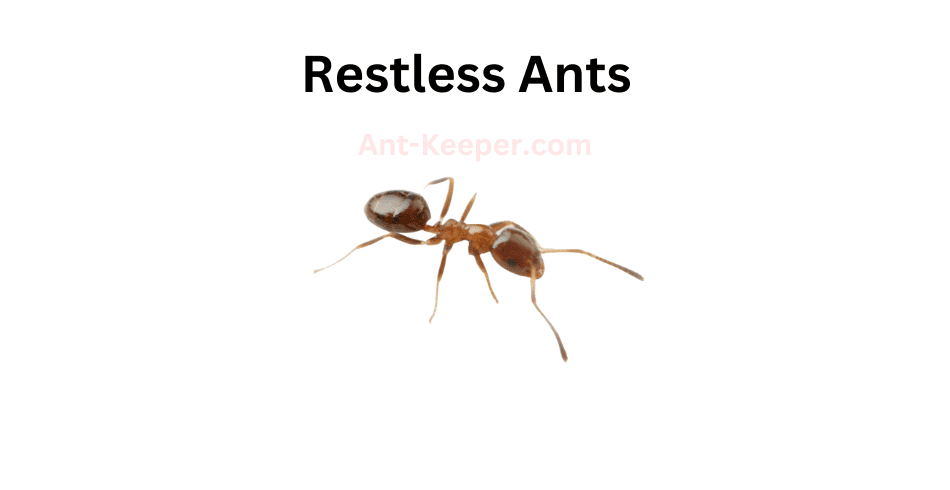
Restless Ants, also known as the Red Ants, are a species of ants that belong to the Formicidae family.
They are known for their highly active and restless behavior, constantly moving around in search of food and resources.
These ants are typically small in size, measuring around 2-3 mm in length.
They have a reddish-brown coloration and a slender body shape, with long legs and antennae.
Restless Ants are social insects, living in large colonies that can contain thousands of individuals.
Restless Ants are omnivorous, feeding on a variety of food sources including insects, fruits, and seeds.
They are also known to scavenge for food, often raiding the nests of other ant species to steal their resources.
One of the most interesting aspects of Restless Ants is their ability to adapt to changing environments.
They are able to quickly adjust their behavior and foraging patterns in response to changes in their surroundings, such as changes in temperature or the availability of food.
Restless Ants are also known for their aggressive behavior, particularly when defending their nests or resources.
They have powerful mandibles that they use to bite and defend themselves against predators or other ants.
Overall, Restless Ants are fascinating creatures that play an important role in their ecosystem.
Their highly active and adaptable behavior makes them a valuable species to study and understand.
46) Platythyrea

Platythyreabe is a species of ant that belongs to the family Formicidae.
These ants are known for their unique physical characteristics, including their flattened bodies and elongated mandibles.
Platythyreabe ants are typically found in forested areas and are known to be active foragers, often hunting for small insects and other invertebrates.
One of the most interesting aspects of Platythyreabe ants is their social behavior.
These ants live in colonies that are typically composed of several hundred individuals.
Within these colonies, there is a strict hierarchy, with a single queen ant at the top.
The queen is responsible for laying eggs, while the other ants in the colony are responsible for caring for the young and maintaining the nest.
Platythyreabe ants are also known for their aggressive behavior.
When threatened, these ants will use their elongated mandibles to defend themselves and their colony.
They are also known to release a chemical signal that alerts other ants in the colony to the presence of a threat.
Despite their aggressive behavior, Platythyreabe ants play an important role in their ecosystem.
They help to control populations of small insects and other invertebrates, and they also serve as a food source for larger predators.
Overall, Platythyreabe ants are fascinating creatures that offer a unique glimpse into the complex world of social insects.
47) Podomyrma
Podomyrmabe is a species of ant that belongs to the Formicidae family.
These ants are known for their small size, typically measuring between 2-3mm in length.
They have a distinctive appearance, with a dark brown or black body and long, slender legs.
Podomyrmabe ants are typically found in forested areas, where they live in small colonies.
They are known for their aggressive behavior, and will defend their territory fiercely against other ant species.
Despite their small size, they are capable of inflicting painful bites on humans and other animals.
These ants are omnivorous, feeding on a variety of food sources including insects, fruits, and plant sap.
They are also known to tend to aphids, which produce a sugary substance that the ants feed on.
Podomyrmabe ants are important members of their ecosystem, playing a key role in the food chain.
They are preyed upon by a variety of animals, including birds, reptiles, and other insects.
In turn, they help to control populations of other insects, and their activities help to aerate and fertilize the soil.
Overall, Podomyrmabe ants are fascinating creatures that play an important role in the natural world.
While they may be small and often overlooked, they are a vital part of the ecosystem and deserve our respect and admiration.
48) Spiny Ants, Polyrhachis

Spiny ants, also known as Polyrhachis sp., are a species of ants that belong to the family Formicidae.
These ants are known for their unique appearance, with spines covering their bodies that serve as a form of protection against predators.
Spiny ants are typically black or dark brown in color and range in size from 4 to 10 millimeters in length.
They are found in a variety of habitats, including forests, grasslands, and urban areas.
These ants are known for their aggressive behavior and will defend their nests fiercely.
Spiny ants are omnivores, feeding on a variety of food sources including insects, nectar, and honeydew.
They are also known to tend to aphids, protecting them from predators in exchange for the sweet honeydew they produce.
These ants are social insects, living in colonies that can range in size from a few dozen to several thousand individuals.
The colony is typically led by a queen ant, who is responsible for laying eggs and maintaining the colony's population.
Spiny ants play an important role in their ecosystems, serving as both predators and prey.
They help to control the populations of other insects and provide food for larger animals such as birds and reptiles.
Overall, spiny ants are a fascinating species of ants that are known for their unique appearance and aggressive behavior.
They play an important role in their ecosystems and are an important part of the natural world.
49) Porthole Ants, Ponera
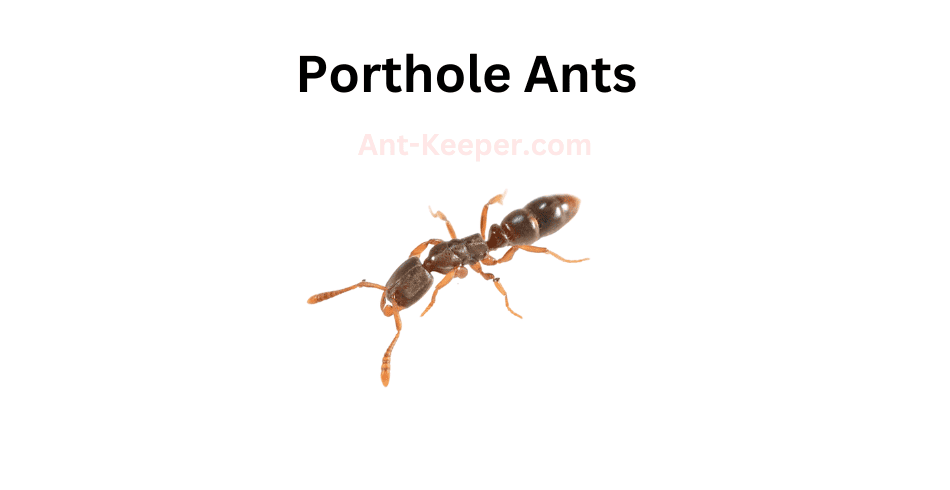
Porthole ants, also known as Temnothorax spp., are a genus of small ants that are commonly found in forested areas.
These ants are known for their unique nesting behavior, as they create their nests in small cavities or "portholes" in trees, rocks, or other natural structures.
Porthole ants are typically less than 5mm in length and have a dark brown or black coloration.
They are social insects and live in colonies that can range from a few dozen to several hundred individuals.
The colonies are typically led by a single queen, who is responsible for laying eggs and maintaining the colony's reproductive population.
One of the most interesting aspects of porthole ants is their nesting behavior.
Unlike many other ant species, porthole ants do not create large underground nests.
Instead, they seek out small cavities in natural structures and use them as their nesting sites.
These cavities can be as small as a few millimeters in diameter and are often located high up in trees or on rocky outcroppings.
Porthole ants are also known for their ability to adapt to changing environmental conditions.
They are able to quickly relocate their nests if their current nesting site becomes unsuitable due to factors such as flooding or predation.
This adaptability allows them to thrive in a variety of habitats, from temperate forests to arid deserts.
Overall, porthole ants are a fascinating and unique species of ant that have adapted to their environment in a variety of ways.
Their nesting behavior and adaptability make them an important species to study for understanding the ecology of forested areas.
50) Prionomyrmex
Prionomyrmex is a genus of ants that belongs to the subfamily Myrmicinae.
The ants in this genus are known for their unique morphology, which includes a long, slender body and elongated mandibles.
The species in this genus are typically found in arid regions and are adapted to survive in harsh environments.
Prionomyrmex ants are social insects that live in colonies.
The colonies are usually small, with only a few hundred individuals.
The ants in the colony are divided into different castes, including workers, soldiers, and reproductive individuals.
The workers in the colony are responsible for foraging for food, caring for the young, and maintaining the nest.
The soldiers are larger and have more powerful mandibles, which they use to defend the colony from predators.
The reproductive individuals are responsible for producing offspring and expanding the colony.
Prionomyrmex ants are known for their aggressive behavior and are not afraid to defend their colony.
They are also known for their ability to survive in harsh environments, such as deserts, where food and water are scarce.
Overall, Prionomyrmex ants are fascinating insects that have adapted to survive in some of the harshest environments on earth.
Their unique morphology and behavior make them a fascinating subject for study and observation.
51) Prionopelta
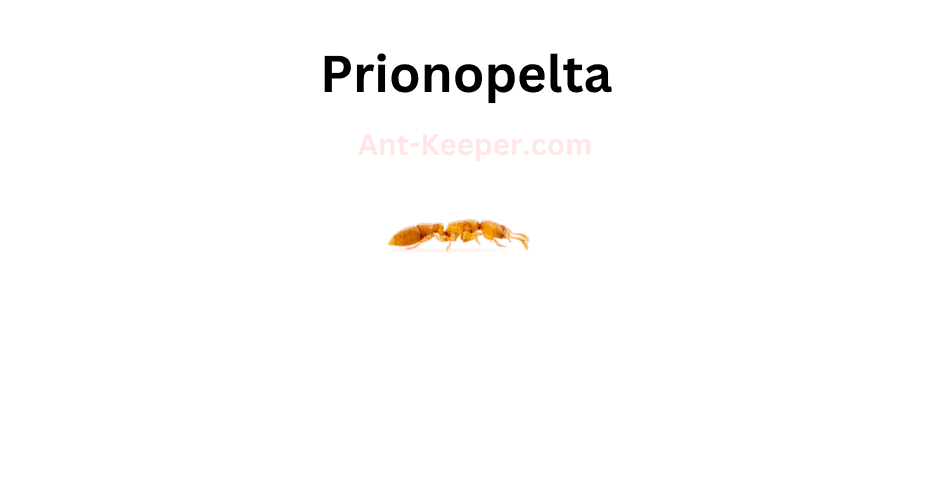
Prionopeltabe is a species of ant that belongs to the family Formicidae.
These ants are known for their unique physical characteristics and behavior.
They have a dark brown or black body with a shiny exoskeleton.
Their head is elongated and narrow, with large mandibles that are used for hunting and defense.
The workers of this species are small, measuring only a few millimeters in length, while the queen can grow up to 10 millimeters.
Prionopeltabe ants are known for their aggressive behavior and are often found in large colonies.
They are omnivorous and feed on a variety of food sources, including insects, fruits, and nectar.
These ants are also known to farm aphids for their honeydew, which they use as a food source.
One of the most interesting aspects of Prionopeltabe ants is their unique nesting behavior.
They build their nests in the soil, but instead of creating a single entrance, they create multiple entrances that lead to a central chamber.
This allows the ants to quickly move from one area of the nest to another, making it easier for them to defend their colony from predators.
Overall, Prionopeltabe ants are fascinating creatures that play an important role in their ecosystem.
Their aggressive behavior and unique nesting habits make them a valuable subject of study for scientists and researchers.
52) Prolasius
Prolasius is a genus of ants belonging to the family Formicidae.
These ants are known for their unique morphology and behavior.
They are small in size, measuring between 2-4 mm in length, and have a distinctive appearance with a flattened head and elongated mandibles.
Prolasius ants are primarily found in forested areas and are known to be arboreal, meaning they live in trees.
They are also known to be social insects, living in colonies that can range from a few dozen to several hundred individuals.
The colonies are typically led by a queen ant, who is responsible for laying eggs and maintaining the colony's social structure.
One of the most interesting aspects of Prolasius ants is their feeding behavior.
They are known to be omnivorous, feeding on a variety of food sources including insects, nectar, and honeydew.
They are also known to have a mutualistic relationship with certain species of aphids, which provide them with a sugary substance called honeydew in exchange for protection from predators.
Prolasius ants are also known for their defensive behavior.
When threatened, they will use their elongated mandibles to bite and spray formic acid, a chemical that can cause irritation and pain to predators.
Overall, Prolasius ants are fascinating creatures with unique morphology, behavior, and ecological roles.
Their study can provide valuable insights into the complex interactions between different species in forest ecosystems.
53) Pseudolasius
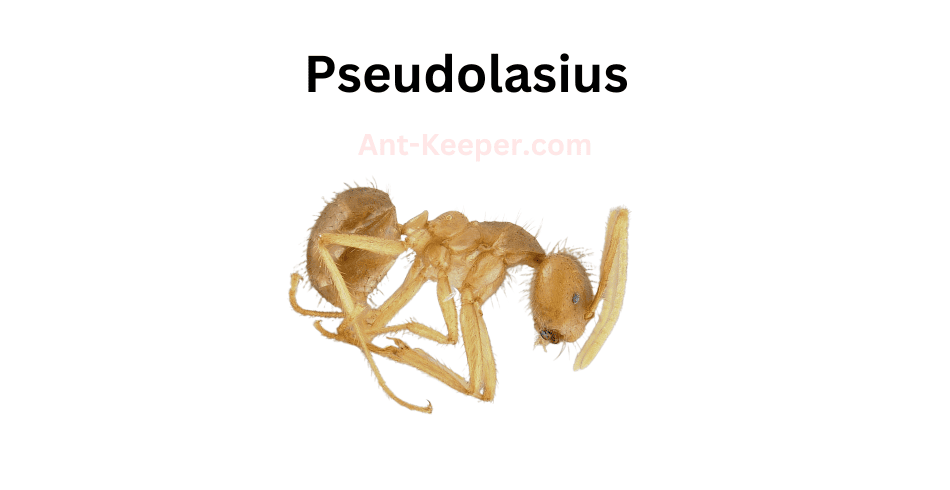
Pseudolasius is a genus of ants belonging to the family Formicidae.
These ants are known for their small size and distinctive appearance, with workers measuring between 2-3 mm in length.
The genus is characterized by the presence of a single petiolar node and a lack of spines on the mesosoma.
Pseudolasius ants are typically found in forested areas, where they forage for food and build their nests in soil or leaf litter.
They are known to feed on a variety of food sources, including insects, nectar, and honeydew produced by sap-sucking insects.
One interesting aspect of Pseudolasius behavior is their tendency to form large colonies with multiple queens.
This is in contrast to many other ant species, which typically have a single queen per colony.
The presence of multiple queens allows Pseudolasius colonies to grow rapidly and efficiently exploit food resources.
Despite their small size, Pseudolasius ants play an important role in forest ecosystems.
They are known to disperse seeds and contribute to soil health through their nest-building activities.
Additionally, they serve as an important food source for many other animals, including birds and small mammals.
Overall, Pseudolasius ants are a fascinating and important group of insects that play a vital role in forest ecosystems.
54) Rhopalothrix
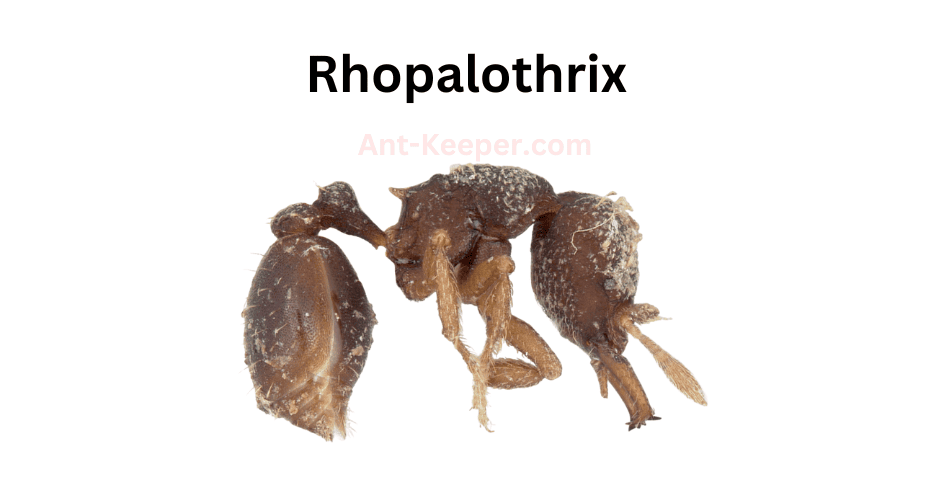
Rhopalothrix is a genus of ants belonging to the family Formicidae.
These ants are known for their unique morphology and behavior.
The workers of Rhopalothrix are small in size, measuring between 2-4 mm in length.
They have a distinct head shape, with a narrow and elongated head that is wider at the base.
The antennae of Rhopalothrix are also elongated and have a distinct club-like shape at the end.
Rhopalothrix ants are known for their cryptic behavior.
They are often found living in small colonies in the leaf litter or soil.
These ants are also known for their specialized diet, which consists of small arthropods such as mites and springtails.
Rhopalothrix ants have been observed using their elongated heads to probe into small crevices and cracks in the soil to capture their prey.
One of the most interesting aspects of Rhopalothrix ants is their reproductive behavior.
Unlike most ants, Rhopalothrix colonies are often headed by a single queen.
However, in some species, multiple queens may be present in a colony.
These queens are known to engage in a behavior called "pleometrosis," where they work together to establish a new colony.
This behavior is rare in ants and is thought to be an adaptation to living in harsh environments.
Overall, Rhopalothrix ants are a fascinating group of insects with unique morphology and behavior.
Their specialized diet and reproductive behavior make them an important subject of study for entomologists and ecologists alike.
55) Rhytidoponera
Rhytidoponera is a genus of ants belonging to the subfamily Ponerinae.
One of the species in this genus is Rhytidoponera rabe, commonly known as the Rabe ant.
These ants are small in size, measuring around 5-6 mm in length.
They have a dark brown or black coloration and a shiny exoskeleton.
Rhytidoponera rabe ants are known for their aggressive behavior and are often found in large colonies.
They are primarily ground-dwelling ants and can be found in a variety of habitats, including forests, grasslands, and urban areas.
These ants are omnivorous and feed on a variety of food sources, including insects, nectar, and honeydew.
The Rabe ant is known for its unique defensive behavior.
When threatened, these ants will raise their gasters (abdomens) and release a chemical substance that acts as a deterrent to predators.
This behavior is known as "gaster-flagging" and is a common defensive mechanism in many ant species.
Rhytidoponera rabe ants are also known for their role in seed dispersal.
They are attracted to the elaiosomes (fleshy appendages) of seeds and will carry them back to their nests.
The seeds are then discarded in the nest, where they can germinate and grow.
Overall, Rhytidoponera rabe ants are fascinating creatures with unique behaviors and important ecological roles.
56) Fire Ants, Solenopsis

Fire ants are a type of ant that belongs to the Solenopsis genus.
They are known for their reddish-brown color and their aggressive behavior.
Fire ants are social insects that live in colonies, which can range in size from a few hundred to several thousand individuals.
Fire ants are omnivorous and feed on a variety of foods, including insects, seeds, and other small animals.
They are also known to scavenge for food and will often invade other ant colonies to steal their resources.
One of the most distinctive features of fire ants is their ability to sting.
They have a stinger located at the end of their abdomen, which they use to inject venom into their prey or enemies.
Fire ant stings can be painful and can cause an allergic reaction in some people.
Fire ants are also known for their ability to build large mounds, which can reach heights of up to 18 inches.
These mounds are made of soil and are used as a nesting site for the colony.
Fire ants are considered to be an invasive species in many parts of the world, as they can cause damage to crops and wildlife.
They are also a nuisance to humans, as their stings can be painful and their mounds can be unsightly.
Overall, fire ants are fascinating insects that have adapted to thrive in a variety of environments.
While they can be a nuisance, they are an important part of the ecosystem and play a vital role in controlling insect populations.
57) Sphinctomyrmex

Sphinctomyrmex is a genus of ants that belongs to the subfamily Myrmicinae.
These ants are known for their unique morphology, which includes a distinct constriction between the thorax and abdomen, giving them their common name of "waist ants."
Sphinctomyrmex ants are relatively small, with workers measuring between 2-5mm in length.
They are typically reddish-brown in color, with a shiny exoskeleton.
These ants are known for their aggressive behavior, and will readily defend their nests against intruders.
One of the most interesting aspects of Sphinctomyrmex ants is their reproductive strategy.
Unlike many other ant species, Sphinctomyrmex queens do not mate with multiple males.
Instead, they mate with a single male and store his sperm in a specialized organ called the spermatheca.
This allows the queen to produce offspring with a high degree of relatedness, which may confer certain advantages in terms of colony cohesion and cooperation.
Sphinctomyrmex ants are found in a variety of habitats, including forests, grasslands, and deserts.
They are known to forage on the ground and in the understory, and will feed on a variety of food sources, including insects, nectar, and honeydew.
Overall, Sphinctomyrmex ants are a fascinating group of insects that exhibit a number of unique traits and behaviors.
Their distinctive morphology, aggressive behavior, and unusual reproductive strategy make them a subject of interest for researchers and ant enthusiasts alike.
58) Stereomyrmex
Stereomyrmex is a genus of ants that belongs to the subfamily Myrmicinae.
The ants in this genus are small in size, measuring between 2-4 mm in length.
They are known for their distinctive morphology, which includes a flattened head and a narrow waist.
The workers of Stereomyrmex are polymorphic, meaning that they come in different sizes and shapes.
Stereomyrmex ants are typically found in forested areas, where they nest in soil or leaf litter.
They are known to be arboreal, meaning that they can climb trees and shrubs in search of food.
These ants are omnivorous, feeding on a variety of food sources including insects, nectar, and honeydew.
One of the most interesting aspects of Stereomyrmex ants is their social behavior.
They are known to be highly aggressive towards other ant species, often engaging in territorial battles.
Within their own colony, Stereomyrmex ants exhibit a hierarchical social structure, with the queen being the dominant individual.
The queen is responsible for laying eggs, while the workers take care of the brood and forage for food.
Overall, Stereomyrmex ants are fascinating creatures that play an important role in their ecosystem.
Their unique morphology and social behavior make them a subject of interest for researchers and ant enthusiasts alike.
59) Stigmacros
Stigmacrosbe is a species of ant that belongs to the family Formicidae.
These ants are known for their unique physical characteristics, including their elongated mandibles and large eyes.
Stigmacrosbe ants are typically found in forested areas, where they build their nests in soil or leaf litter.
One interesting aspect of Stigmacrosbe ants is their social behavior.
They live in colonies that are typically composed of a queen, workers, and soldiers.
The queen is responsible for laying eggs, while the workers and soldiers are responsible for maintaining the nest and protecting it from predators.
Stigmacrosbe ants are also known for their ability to communicate with one another through the use of pheromones.
These chemical signals allow the ants to coordinate their activities and work together to achieve common goals.
Despite their small size, Stigmacrosbe ants play an important role in their ecosystem.
They help to aerate the soil, which promotes the growth of plants, and they also serve as a food source for other animals.
Overall, Stigmacrosbe ants are fascinating creatures that have much to teach us about the natural world.
Through careful observation and study, scientists continue to uncover new insights into the behavior and biology of these remarkable insects.
60) Vampire Ants, Stigmatomma
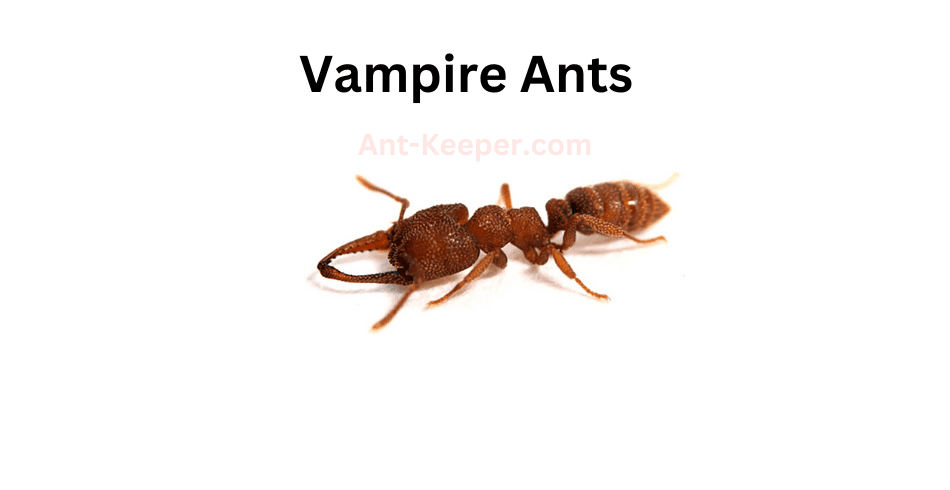
Vampire ants, also known as blood-sucking ants, are a species of ants that feed on the blood of other insects.
These ants are known for their unique feeding behavior, which involves biting into the exoskeleton of their prey and then sucking out their blood.
Vampire ants are typically found in tropical and subtropical regions, where they live in colonies of up to several thousand individuals.
They are known for their aggressive behavior and will attack other insects, including larger prey such as grasshoppers and caterpillars.
One of the most interesting aspects of vampire ants is their ability to adapt to their environment.
In some cases, these ants have been known to feed on the blood of their own colony members when other sources of food are scarce.
Vampire ants are also known for their unique physical characteristics.
They have long, curved mandibles that are used to bite into the exoskeleton of their prey.
They also have specialized mouthparts that allow them to suck out the blood of their victims.
Despite their aggressive behavior and blood-sucking tendencies, vampire ants play an important role in their ecosystem.
They help to control the populations of other insects and contribute to the overall balance of their environment.
Overall, vampire ants are a fascinating species of ants that have adapted to their environment in unique and interesting ways.
Their behavior and physical characteristics make them a subject of interest for scientists and nature enthusiasts alike.
61) Miniature Trap-Jaw Ants, Strumigenys

The Miniature Trap-Jaw Ants, scientifically known as Odontomachus sp., are a species of ants that belong to the family Formicidae.
These ants are known for their unique and powerful mandibles, which they use to capture prey and defend their colonies.
The Miniature Trap-Jaw Ants are relatively small in size, measuring only a few millimeters in length.
They have a dark brown or black coloration and a slender body shape.
Their most distinctive feature is their mandibles, which are elongated and can snap shut with incredible force.
These mandibles are used to capture prey, crush seeds, and defend the colony against predators.
The Miniature Trap-Jaw Ants are found in a variety of habitats, including forests, grasslands, and deserts.
They are known to be active during the day and are often seen foraging for food.
These ants are omnivorous and feed on a variety of food sources, including insects, nectar, and seeds.
The Miniature Trap-Jaw Ants are social insects and live in colonies that can range in size from a few dozen to several thousand individuals.
The colony is typically led by a queen, who is responsible for laying eggs and maintaining the colony's population.
The workers are responsible for foraging, caring for the young, and defending the colony.
Overall, the Miniature Trap-Jaw Ants are fascinating insects that have evolved unique adaptations to survive in their environment.
Their powerful mandibles and social behavior make them an important part of many ecosystems.
62) Tapinoma

Tapinoma is a genus of ants that belongs to the family Formicidae.
The species Tapinoma is a small ant that measures about 2-3 mm in length.
They are commonly found in urban and suburban areas, and are known to invade homes and buildings in search of food and shelter.
Tapinoma ants are light brown in color and have a slender body with long legs.
They have a distinctively shaped head that is wider than their thorax, and they possess a pair of antennae that are bent at a right angle.
These ants are known for their ability to form large colonies, which can consist of thousands of individuals.
Tapinoma ants are omnivorous and feed on a variety of food sources, including insects, nectar, and honeydew.
They are also known to scavenge for food in garbage cans and other waste areas.
These ants are attracted to sweet and sugary substances, and will often invade kitchens and pantries in search of food.
Tapinoma ants are not known to be aggressive towards humans, but they can become a nuisance when they invade homes and buildings.
They are known to build their nests in wall voids, under floors, and in other hidden areas.
If left unchecked, these ants can cause damage to structures and can contaminate food sources.
Overall, Tapinoma ants are a common pest in many parts of the world.
While they are not harmful to humans, they can be a nuisance when they invade homes and buildings.
Proper pest control measures can help to prevent infestations and keep these ants at bay.
63) Pale-Footed Ants, Technomyrmex
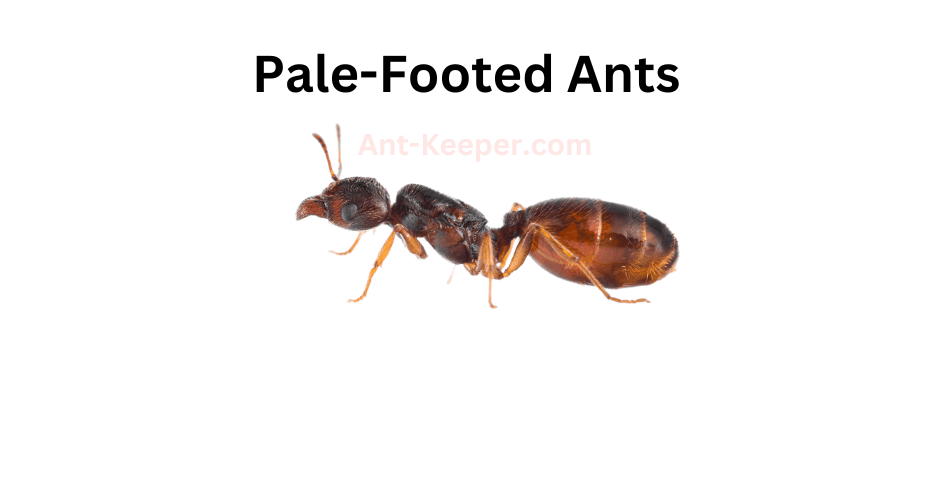
Pale-Footed Ants, also known as Pheidole pallidula, are a species of ant belonging to the family Formicidae.
These ants are typically small in size, measuring around 2-3mm in length, and are characterized by their pale yellowish-brown coloration and distinctive pale-colored feet.
Pale-Footed Ants are known for their highly organized social structure, which is divided into different castes including workers, soldiers, and reproductive individuals.
Workers are responsible for foraging for food, caring for the young, and maintaining the nest, while soldiers are tasked with defending the colony from predators and other threats.
One of the most interesting aspects of Pale-Footed Ant behavior is their ability to engage in "tandem running," a process in which two ants run together, with the follower using its antennae to track the movements of the leader.
This behavior is thought to help the ants navigate their environment more efficiently and locate food sources more quickly.
Pale-Footed Ants are also known for their unique feeding habits, which include a preference for sweet liquids such as nectar and honeydew.
They are also known to engage in trophallaxis, a process in which food is shared between members of the colony through mouth-to-mouth transfer.
Overall, Pale-Footed Ants are a fascinating species with a complex social structure and unique behaviors.
Their small size and inconspicuous appearance make them easy to overlook, but their importance in maintaining ecological balance and contributing to the overall health of their ecosystem should not be underestimated.
64) Pavement Ants, Tetramorium
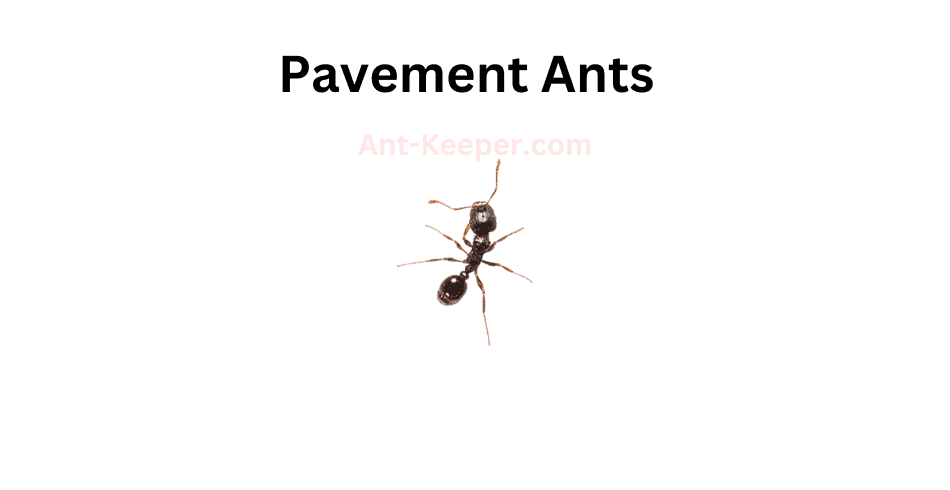
Pavement ants, also known as Tetramorium caespitum, are a species of ant that belong to the family Formicidae.
These ants are commonly found in urban and suburban areas, where they build their nests in cracks and crevices in pavement, sidewalks, and buildings.
Pavement ants are small in size, measuring between 2.5 to 4 mm in length.
They are typically dark brown or black in color, with lighter colored legs and antennae.
These ants are known for their aggressive behavior and will defend their nests fiercely against intruders.
Pavement ants are omnivorous, feeding on a variety of foods including insects, seeds, and sweet substances such as honeydew and nectar.
They are also known to scavenge for food in garbage cans and other waste areas.
Pavement ants are social insects, living in colonies that can range in size from a few hundred to several thousand individuals.
The colony is typically led by a queen ant, who is responsible for laying eggs and maintaining the colony.
Pavement ants are considered a nuisance pest, as they can invade homes and buildings in search of food and shelter.
They are also known to cause damage to pavement and other structures by excavating soil and creating tunnels.
Overall, pavement ants are a common and adaptable species of ant that play an important role in urban ecosystems.
While they may be a nuisance to humans, they are an important food source for many other animals and help to maintain the balance of the ecosystem.
65) Turneria
Turneriabe is a species of ant that belongs to the Formicidae family.
These ants are known for their small size, typically measuring between 2-3 millimeters in length.
They have a dark brown or black coloration and a slender body shape.
Turneriabe ants are commonly found in forested areas and are known to be arboreal, meaning they live in trees and other vegetation.
These ants are social insects and live in colonies that can range in size from a few dozen to several thousand individuals.
The colony is typically led by a queen ant, who is responsible for laying eggs and producing new members of the colony.
The other ants in the colony are divided into different castes, including workers, soldiers, and reproductive ants.
Turneriabe ants are known for their aggressive behavior and will defend their colony against any perceived threats.
They have a powerful bite and can release a chemical substance that can cause irritation and pain to predators.
These ants are also known to be scavengers and will feed on a variety of food sources, including insects, fruits, and plant material.
Overall, Turneriabe ants are an important part of the ecosystem and play a crucial role in maintaining the balance of nature.
They are fascinating creatures that have adapted to their environment in unique ways and continue to thrive in their natural habitats.
66) Argentine Ants, Linepithema Humile
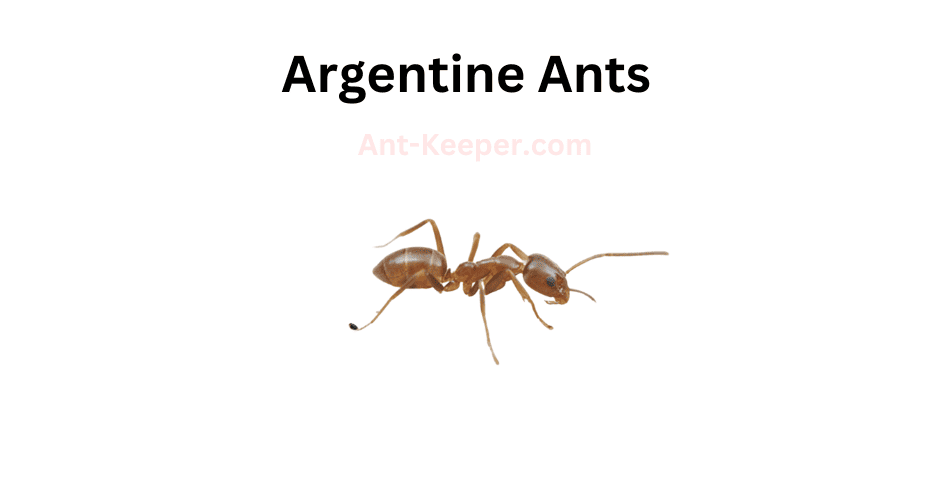
Argentine ants (Linepithema humile) are a species of small, brownish-black ants that are known for their highly invasive behavior.
They are native to South America but have spread to many parts of the world, including North America, Europe, Asia, and Africa.
Argentine ants are social insects that live in large colonies, with thousands of individuals working together to gather food, care for the young, and defend the nest.
They are known for their ability to form supercolonies, which can span vast areas and contain millions of ants.
One of the key factors that has contributed to the success of Argentine ants as an invasive species is their ability to outcompete native ant species for resources.
They are highly aggressive and will attack and kill other ant species, as well as other insects and spiders.
Argentine ants are also known for their ability to form symbiotic relationships with other insects, such as aphids and mealybugs.
These insects produce a sugary substance called honeydew, which the ants feed on in exchange for protection from predators.
Despite their invasive behavior, Argentine ants are not considered to be a significant threat to human health or property.
However, they can be a nuisance when they invade homes and buildings in search of food and water.
Overall, Argentine ants are a fascinating and complex species that have adapted well to a wide range of environments.
Their ability to form large, cooperative colonies and outcompete other ant species has made them a formidable force in the world of insects.
67) Pharaoh Ants, Monomorium Pharaonis
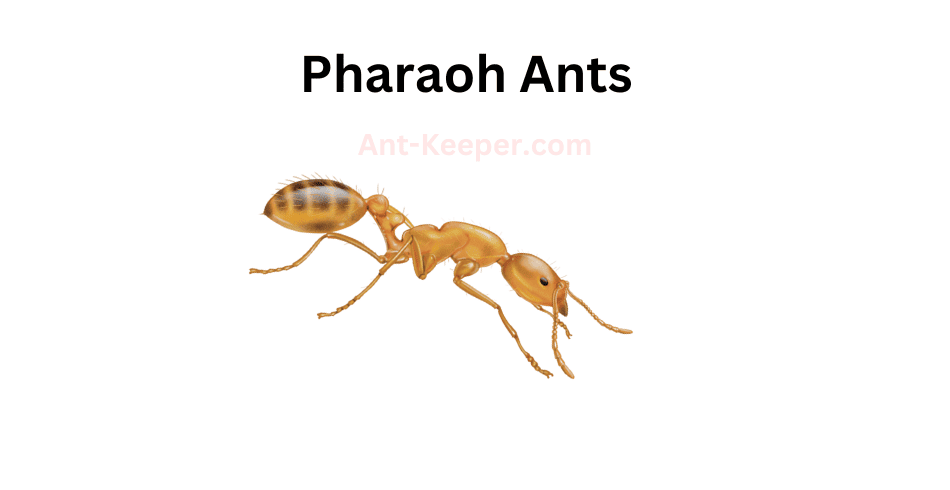
Pharaoh ants, scientifically known as Monomorium pharaonis, are small, yellowish-brown ants that measure about 2 mm in length.
They are commonly found in indoor environments such as homes, hospitals, and commercial buildings.
Pharaoh ants are known for their ability to form large colonies with multiple queens.
These colonies can contain thousands of workers and can quickly infest a building.
They are also known for their ability to adapt to changing environments and can easily relocate their nests if disturbed.
Pharaoh ants are omnivorous and feed on a variety of foods including sweets, meats, and other insects.
They are also known to feed on human fluids such as blood and wound exudates.
Due to their small size and ability to hide in small crevices, pharaoh ants can be difficult to control.
They are known to be resistant to many common insecticides and can quickly rebound after treatment.
Pharaoh ants are also a concern in healthcare settings as they can transmit diseases such as salmonella and staphylococcus.
They can also contaminate sterile equipment and supplies.
Overall, pharaoh ants are a common pest in indoor environments and can be difficult to control.
It is important to seek professional pest control services to effectively manage infestations.
68) Big Headed Ants, Pheidole Dispar

Big Headed Ants, also known as Pheidole megacephala, are a species of ant that belong to the family Formicidae.
These ants are known for their distinctive large heads, which are used for defense and communication within their colonies.
Big Headed Ants are typically found in tropical and subtropical regions, where they build their nests in soil, leaf litter, and other organic matter.
They are omnivorous, feeding on a variety of insects, seeds, and other small organisms.
One of the most interesting aspects of Big Headed Ants is their social behavior.
They live in large colonies, with a queen ant at the center of the hierarchy.
The queen is responsible for laying eggs, while the other ants in the colony perform various tasks such as foraging for food, caring for the young, and defending the colony from predators.
Big Headed Ants are also known for their ability to displace other ant species in their habitats.
They are aggressive and have been known to attack and kill other ants, as well as compete with them for resources.
Despite their aggressive behavior, Big Headed Ants are not considered a major pest species.
However, their ability to displace other ant species and their potential impact on native ecosystems make them an important species to study and monitor.
Check Out Some Of Our Other Ants By Location Posts
| Types Of Ants In Connecticut, United States | Connecticut, located in the northeastern region of the United States, is a state known for its diverse environment and unique weather patterns. The state is ... |
| Types Of Ants In Trinidad And Tobago | Trinidad and Tobago, a twin-island nation located in the southern Caribbean region, boasts a diverse and vibrant environment. The country’s tropical climate is characterized by ... |
| Types Of Ants In Guinea-Bissau | Guinea-Bissau, a small country located in West Africa, is known for its diverse and unique environment. The country is home to a variety of ecosystems, ... |
| Types Of Ants In Northwest Territories, Canada | Nestled in the northernmost region of Canada lies the Northwest Territories, a vast expanse of land that spans over 1. 3 million square kilometers. This ... |
| Types Of Ants In Santiago Del Estero, Argentina | Santiago del Estero, located in the north-central region of Argentina, is a land of diverse landscapes and unique wildlife. The region is known for its ... |
